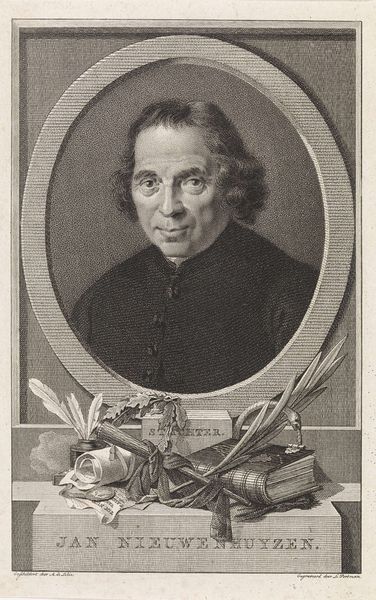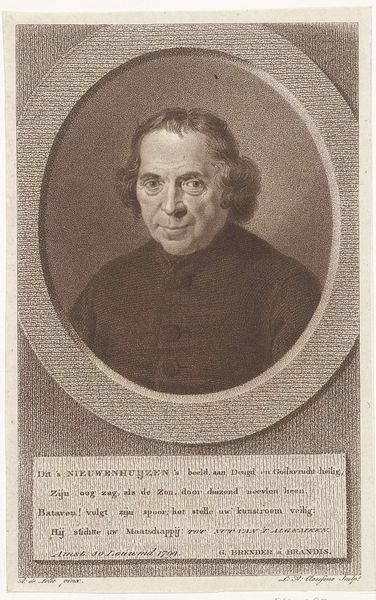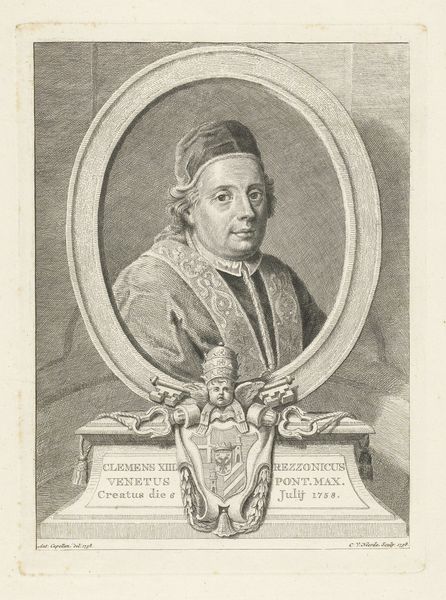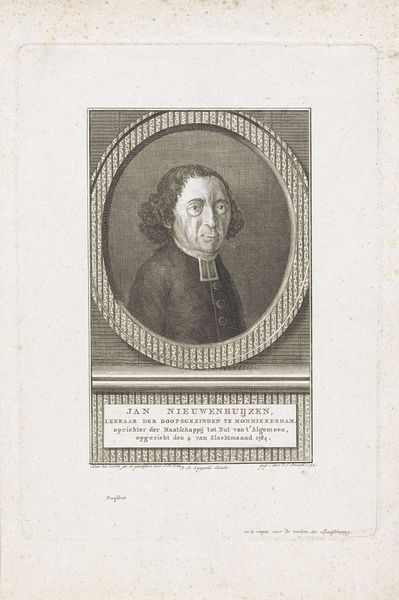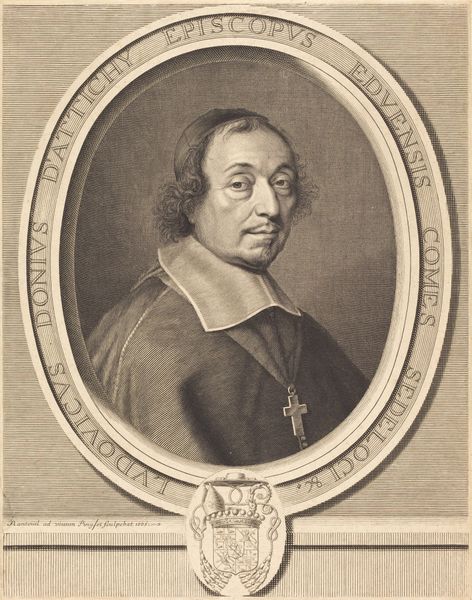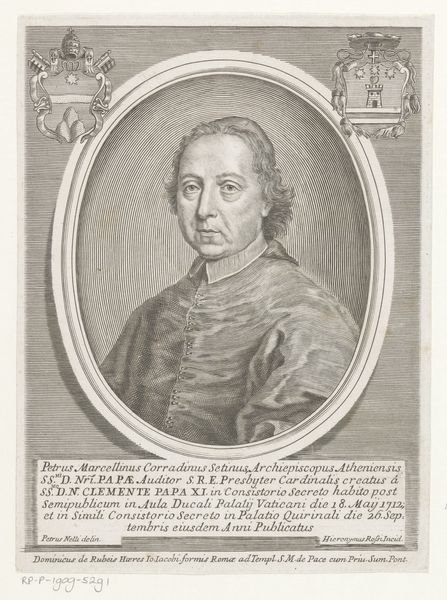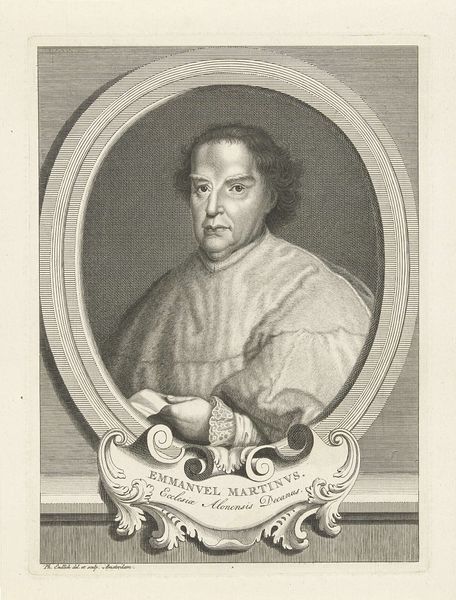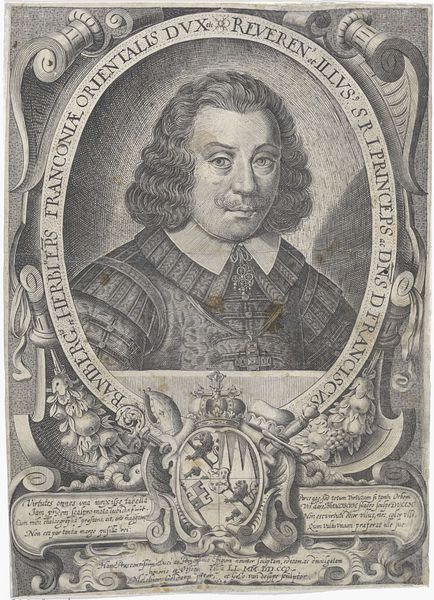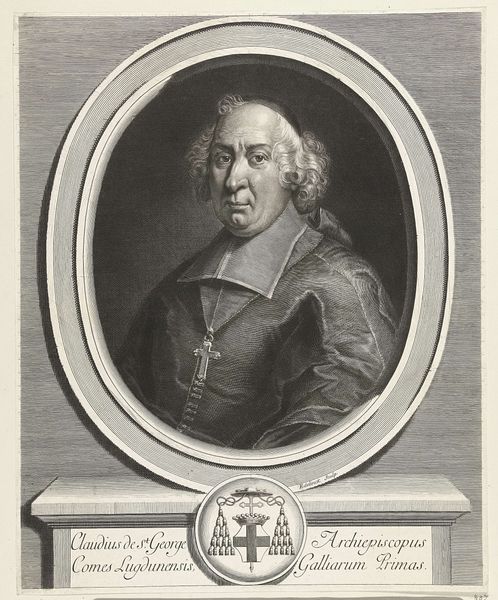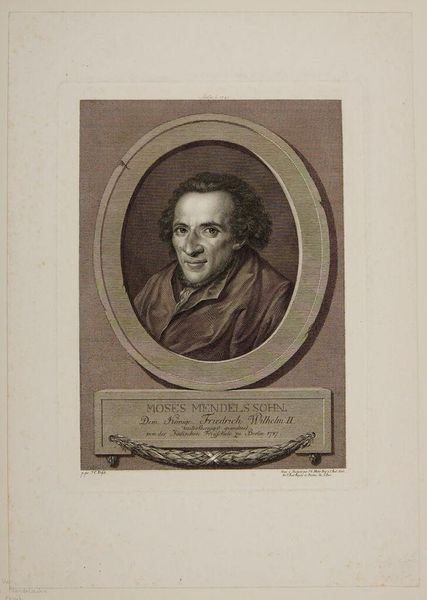
print, engraving
#
portrait
#
neoclacissism
# print
#
old engraving style
#
portrait reference
#
engraving
#
realism
Dimensions: height 168 mm, width 110 mm
Copyright: Rijks Museum: Open Domain
Curator: Looking at this print, “Portret van de predikant Jan Nieuwenhuyzen”, dating roughly from 1820 to 1830, I’m immediately struck by its stillness. There’s such a calm, almost melancholic atmosphere to it. The texture feels delicate, doesn’t it? Editor: Absolutely. This engraving provides us with insight into the power structures prevalent during that time, it captures not just a man, but the embodiment of religious and intellectual authority of the Neoclassical era. How does it sit with you emotionally? Curator: Well, I'm curious about Nieuwenhuyzen himself. His eyes convey a sort of gentle intelligence. It’s not an imposing gaze, but there's a knowing depth. I also feel the neoclassical aesthetics expressed here. That simple oval frame and how he is depicted as such a “rational” man. The choice of print emphasizes detail over vibrancy. Editor: It does highlight the societal values that esteemed reason and order. Think about the historical context of the Dutch enlightenment period where people like him were shaping public morality. How do you think the print form relates to that goal, this engraving style that the tags note as "old engraving style"? Curator: Printing meant that Nieuwenhuyzen’s image could be spread more widely, right? So that this vision, almost this archetype, of reasoned leadership could be seen by a broader public. In some way this also flattens out his personality so his appearance could easily become a recognizable moral brand. Also the little books and things displayed below... Editor: Yes, objects like books and quills. These props reinforce Nieuwenhuyzen's identity as a scholar and theologian and contribute to the social elevation that religious figures possessed in Dutch society at the time. So the symbolism isn't just aesthetic, but about placing him within that framework of reverence and social status. Curator: It makes you think about how portraits can really freeze people in a moment that suits a specific purpose, especially in a religious context. I can’t help but see some of the humor in how the serious man looks amid these bookish objects that support and, almost comically, explain who he is to the public. Editor: Definitely! These weren't simply images but statements intended to preserve an ideal version of people like Jan, thus reminding viewers about what to believe and obey. It highlights a delicate negotiation of the public image. Curator: Seeing how artworks can also be pieces of propaganda like this opens up so many paths of discovery about a period. Thank you! Editor: Thanks to you, I find myself reconsidering this clergyman as not just an old image, but someone enmeshed in social, religious and class dynamics.
Comments
No comments
Be the first to comment and join the conversation on the ultimate creative platform.
